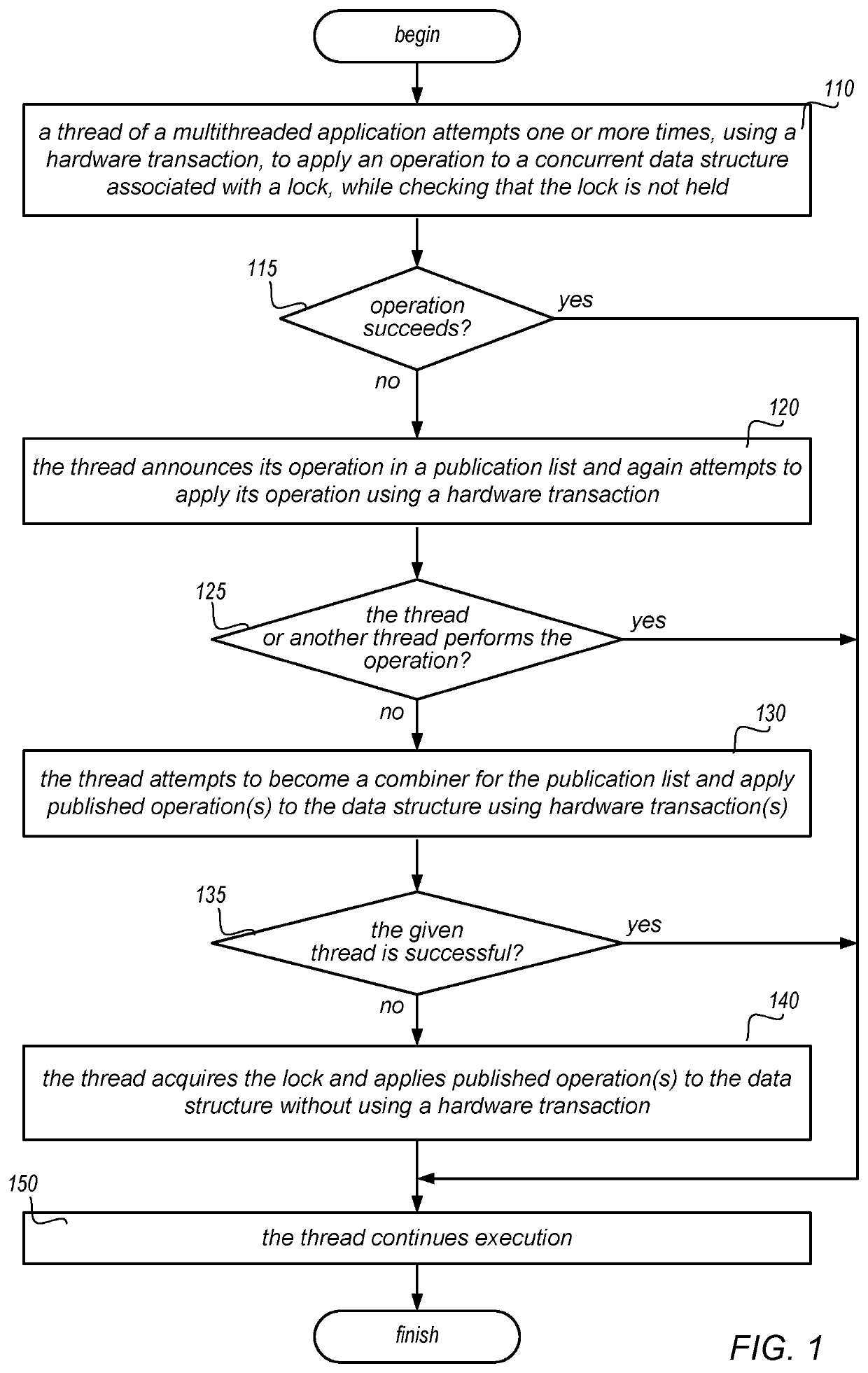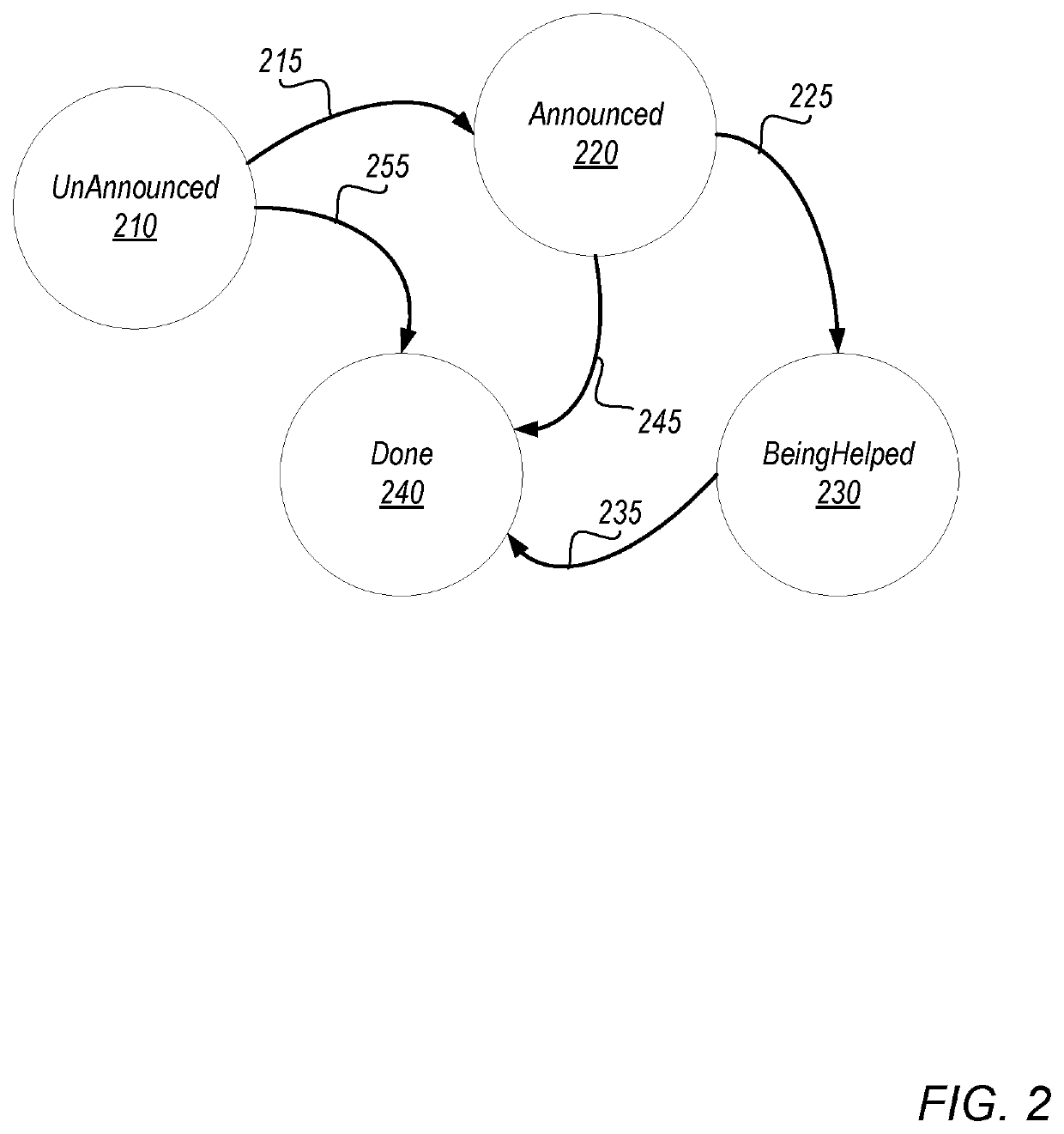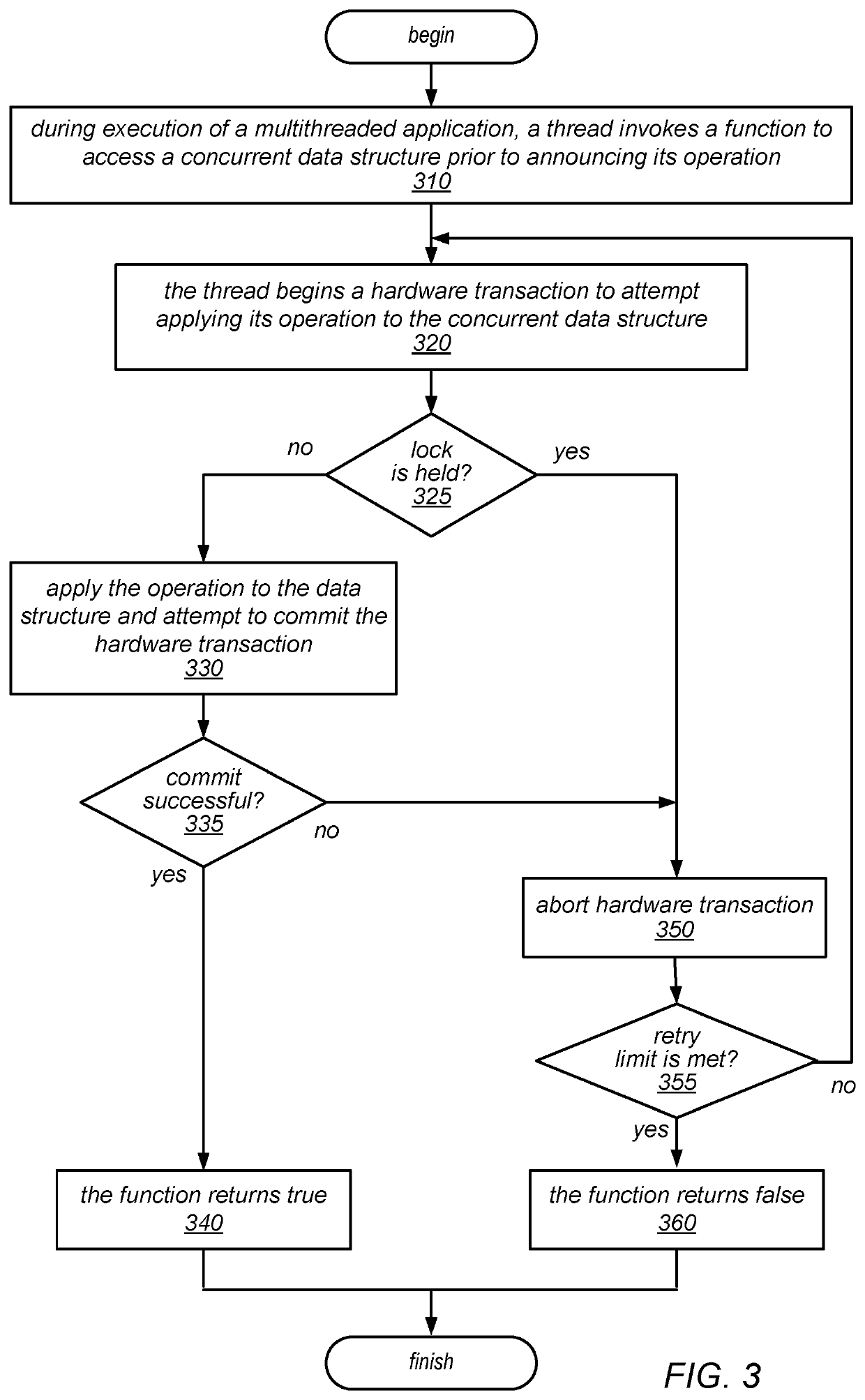Hardware transactional memory-assisted flat combining
a transaction memory and flat combining technology, applied in the field of concurrent data structures, can solve the problems of only being efficient, fc may only be useful, and the pair of accesses to the data structure may necessarily conflict, so as to eliminate two or more operations and apply them more efficiently to the data structure
- Summary
- Abstract
- Description
- Claims
- Application Information
AI Technical Summary
Benefits of technology
Problems solved by technology
Method used
Image
Examples
Embodiment Construction
[0017]As noted above, TLE has been shown to be extremely useful when used with data structures that provide a high level of potential parallelism, such as skip lists or binary search trees. However, other inherently sequential data structures, however, such as stacks or queues, do not benefit from optimistic execution techniques. These data structures may perform better with techniques that allow efficient serialization of multiple threads, such as that provided by the flat combining (FC) algorithm. With FC, the thread that is holding the lock (i.e., the combiner) may execute operations on behalf of threads that are waiting for the lock, hence potentially reducing the number of lock transitions and the amount of coherence traffic.
[0018]In many cases, though, the benefits of FC may be desired along with the flexibility of enabling concurrent execution of operations by multiple threads. In some embodiments of the systems described herein, synchronization of accesses to, and / or operati...
PUM
 Login to View More
Login to View More Abstract
Description
Claims
Application Information
 Login to View More
Login to View More - R&D
- Intellectual Property
- Life Sciences
- Materials
- Tech Scout
- Unparalleled Data Quality
- Higher Quality Content
- 60% Fewer Hallucinations
Browse by: Latest US Patents, China's latest patents, Technical Efficacy Thesaurus, Application Domain, Technology Topic, Popular Technical Reports.
© 2025 PatSnap. All rights reserved.Legal|Privacy policy|Modern Slavery Act Transparency Statement|Sitemap|About US| Contact US: help@patsnap.com



